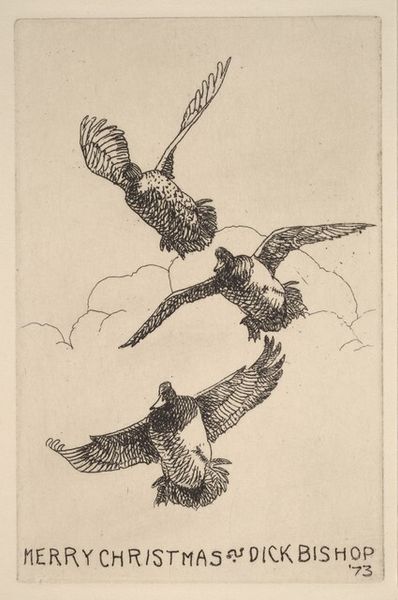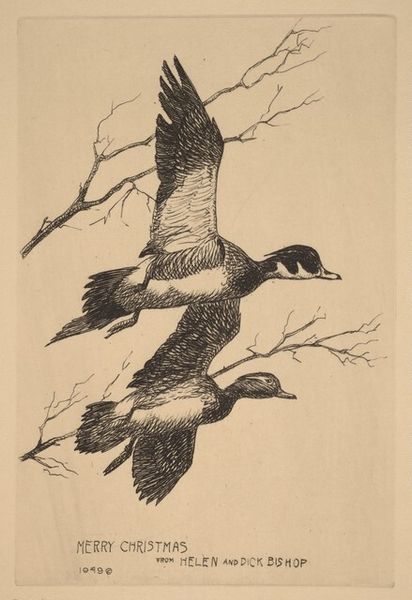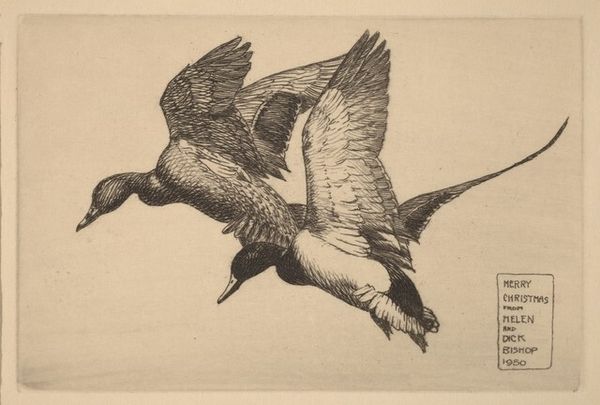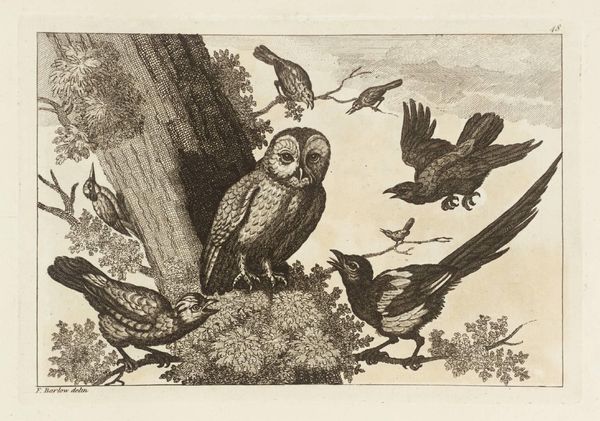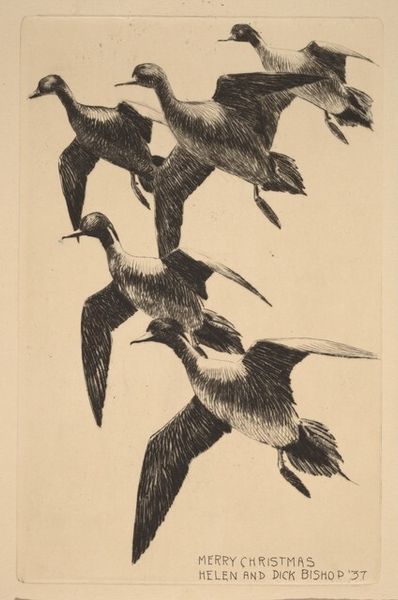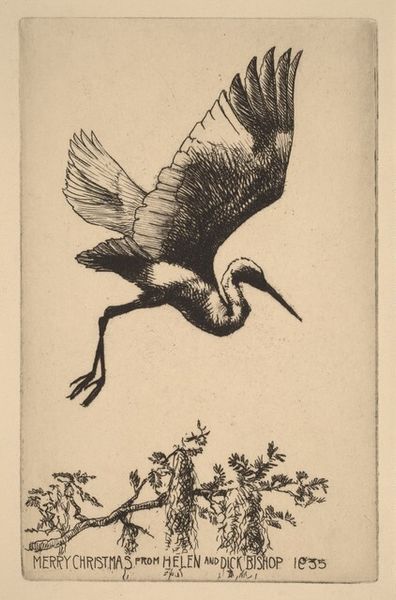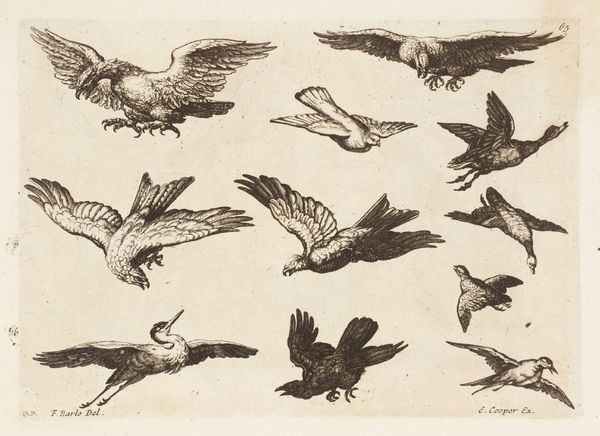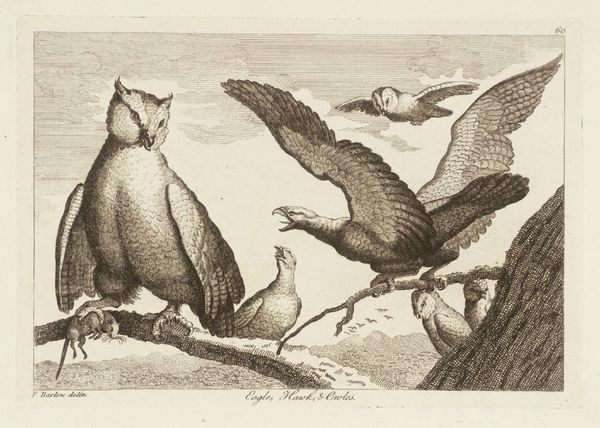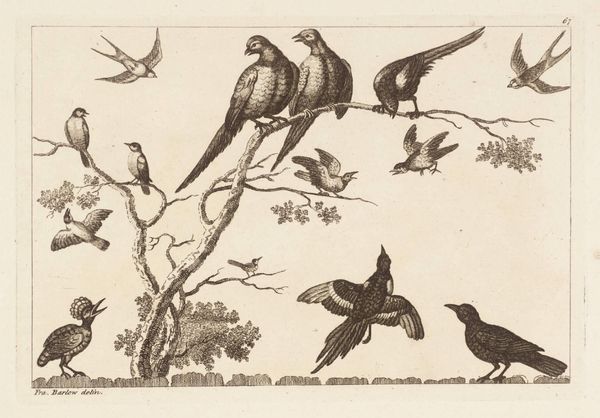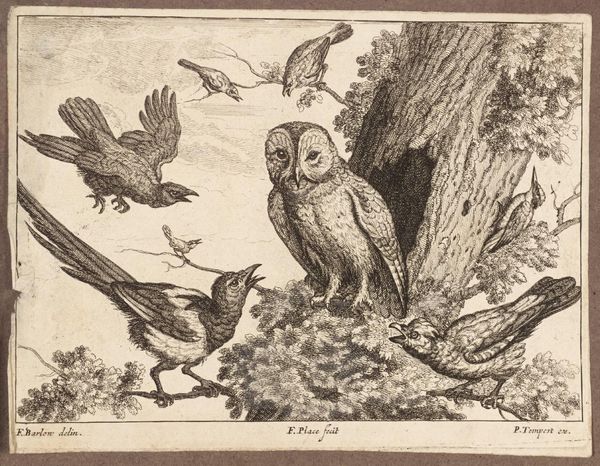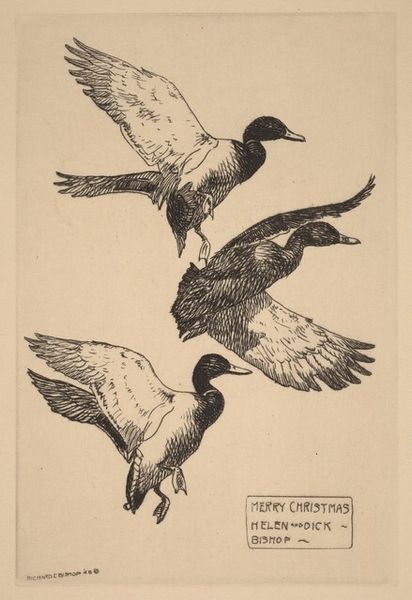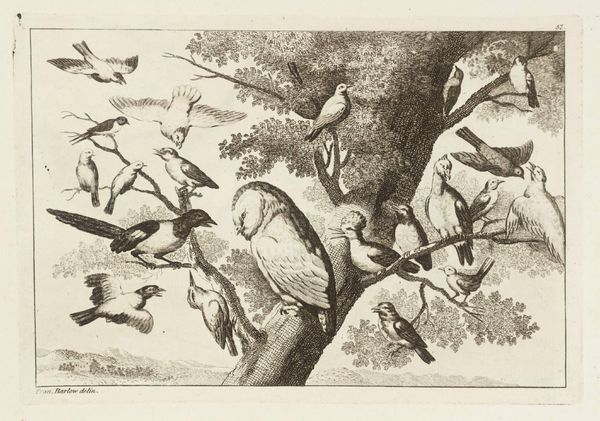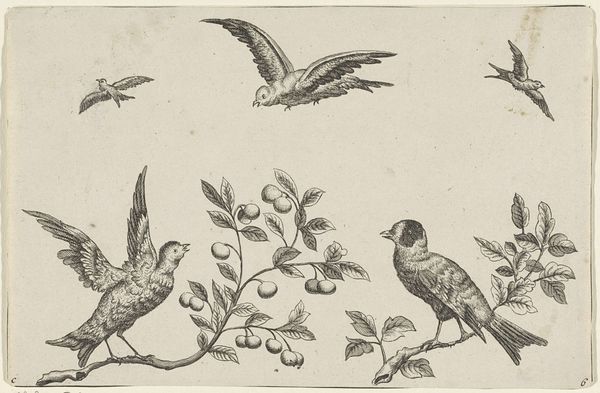
drawing, print, etching, ink, pen
#
drawing
#
ink drawing
# print
#
pen sketch
#
etching
#
ink
#
line
#
pen work
#
pen
Copyright: National Gallery of Art: CC0 1.0
Curator: This is "Christmas Card from Helen and Dick Bishop," an etching and ink print created in 1944. The artist, Richard Evett Bishop, made it as a holiday greeting during a very particular time in history. Editor: Immediately, I’m struck by the dynamism in this small print. There's something incredibly lively about the birds bursting from the bare branches. Curator: It’s interesting to consider that a greeting card during wartime might feature such active imagery. Do you think that this card’s portrayal of movement and migration is speaking to issues of relocation and societal flux during that period? Editor: It could certainly be interpreted that way. Looking at the context of WWII, we might consider this card, produced by the artist and his wife, as a subtle commentary on the yearning for freedom. Beyond metaphor, it's important to remember that wartime restrictions touched even celebratory images. Curator: Right, materials were scarce, so the creation of an etched print, no matter how small, becomes a conscious artistic decision, an intentional use of resources. Editor: The contrast between the birds, so full of life and detailed pen work, against the spidery branches gives the print a somewhat stark, even somber tone. Were winter scenes common choices at this time, or was there more often the hope that was signaled through the red and green of more "traditional" christmas art? Curator: That's a good question, because a holiday card isn't simply an aesthetic object. Bishop has chosen an interesting palette of just black and white, and a relatively unadorned scene. Considering the period of history in which the card was conceived and shared, I do believe that these factors contribute to its profundity as an artifact. Editor: The family name on the card personalizes the shared experience of wartime; but the image extends a hopeful message beyond their home, and beyond Bishop’s lifetime. Curator: Absolutely, and the enduring quality of printmaking ensures its continued impact in discussions about art history and society.
Comments
No comments
Be the first to comment and join the conversation on the ultimate creative platform.
